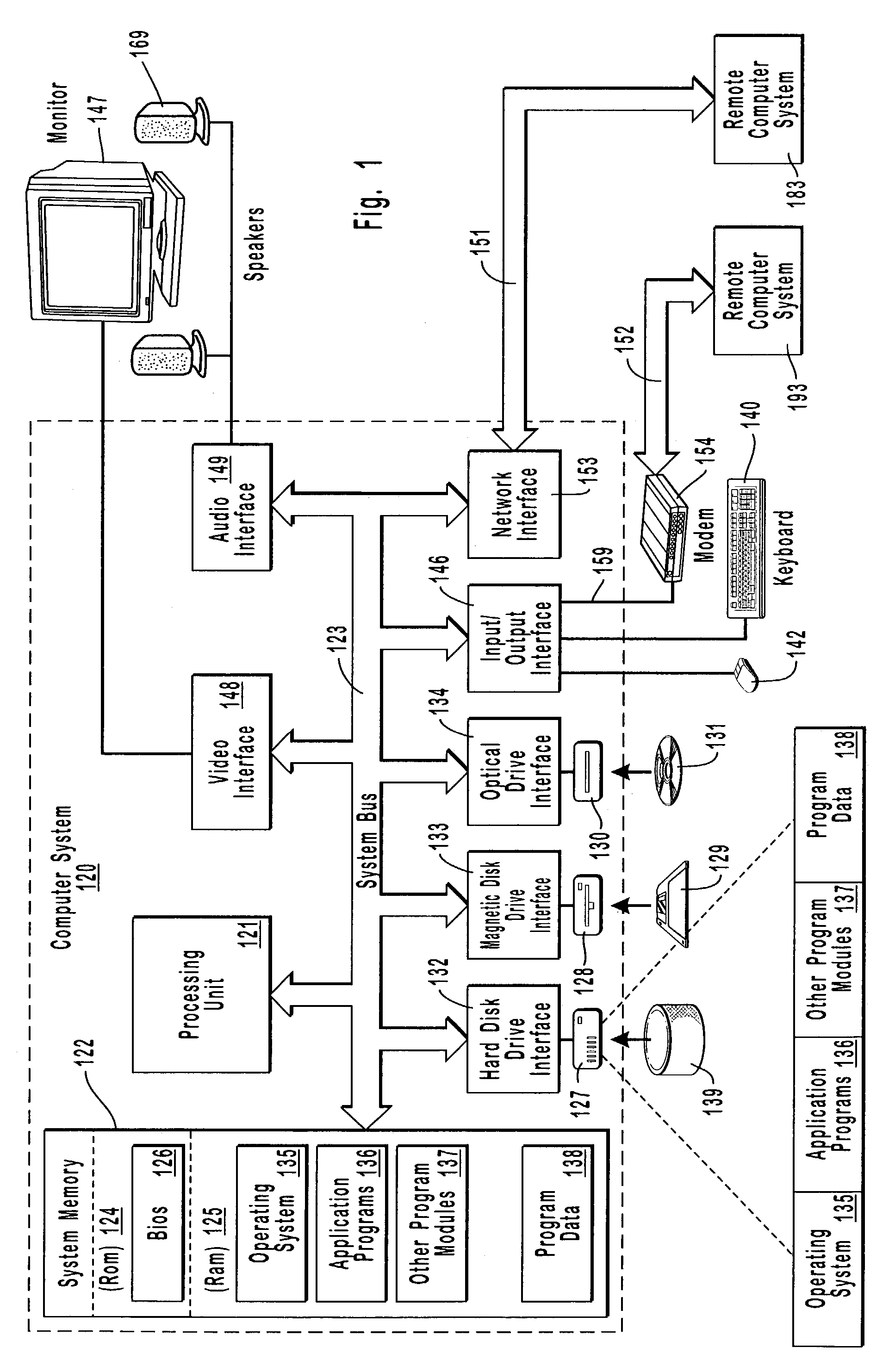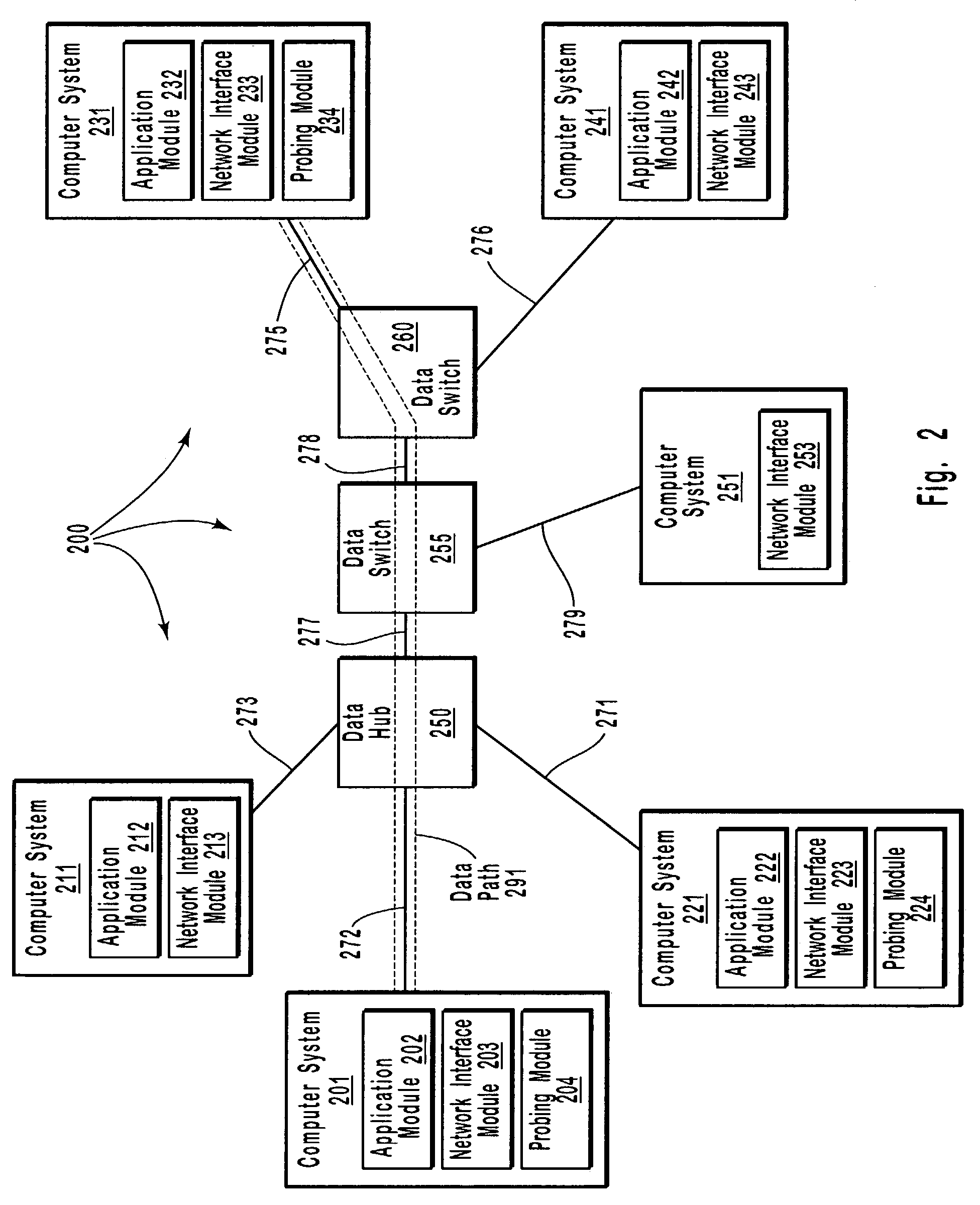Controlling admission of data streams onto a network based on end-to-end measurements
a data stream and end-to-end measurement technology, applied in the field of network communication technology, can solve the problems of inability to correct the adverse conditions of the network, inability to control the adverse conditions, and data loss from time to tim
- Summary
- Abstract
- Description
- Claims
- Application Information
AI Technical Summary
Benefits of technology
Problems solved by technology
Method used
Image
Examples
Embodiment Construction
[0031]The principles of the present invention provide for controlling admission of data streams onto a network. Appropriate determinations in a series of tests, which transition from more passive tests to more active tests, control the admission of data streams onto a network data path. More passive tests can include promiscuous mode measurements at a transmitting side data link of the network data path and, if appropriate, at a receiving side data link of the network data path. When the transmitting side data link and / or the receiving side data link do not have sufficient available bandwidth to support an application data stream, testing ceases and the application data stream is not transmitted onto the network. On the other hand, when the transmitting side data link and, if appropriate, the receiving side data link do have sufficient available bandwidth to support the application data stream, more active testing, such as, for example, a packet-pair test and / or active network probi...
PUM
 Login to View More
Login to View More Abstract
Description
Claims
Application Information
 Login to View More
Login to View More - R&D
- Intellectual Property
- Life Sciences
- Materials
- Tech Scout
- Unparalleled Data Quality
- Higher Quality Content
- 60% Fewer Hallucinations
Browse by: Latest US Patents, China's latest patents, Technical Efficacy Thesaurus, Application Domain, Technology Topic, Popular Technical Reports.
© 2025 PatSnap. All rights reserved.Legal|Privacy policy|Modern Slavery Act Transparency Statement|Sitemap|About US| Contact US: help@patsnap.com



